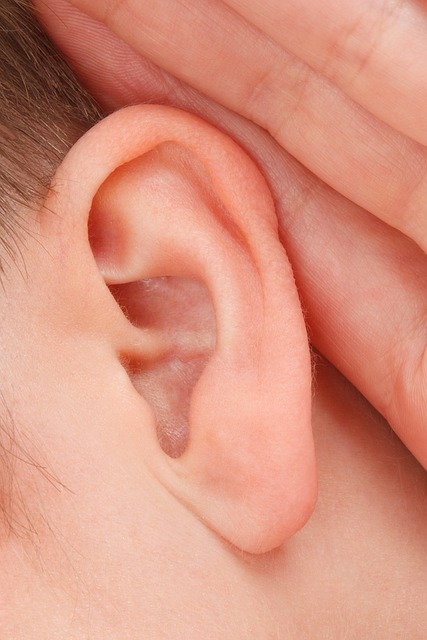Hearing
Article curated by Ginny Smith
Hearing is a hugely important sense, both for humans and other animals. While we understand fairly well how sounds in the air are translated into nerve signals by our ears, this is the limit of our understanding. We know very little about how the brain processes these signals from the world around us.

Our ears have evolved to convert sound vibrations in the air into electrical impulses that our brains can interpret. Sound waves in the air causes the ear drum to vibrate, which pushes on the three tiny bones of the inner ear, causing them to vibrate too. This system amplifies the sound and allows it to be passed into the fluid-filled cochlea. The cochlea is frequency-dependant, so different frequencies cause different areas along it to vibrate. This vibration causes hair cells to move, which transmits nerve impulses to the brain. While this system is fairly well understood, when it comes to how the brain processes the information it receives, there is still much to be explained.
Learn more about hearing.


 2
2Sound information is sent from the cochlea via several relay stations to the cortex of the brain. These relay stations, including the brain stem and the thalamus, are involved in decoding the basic features of the signal.
The auditory cortex is in the temporal lobe, and different cells within it respond to different pitches – these are arranged in a tonotopic map, with cells at one end responding to high frequencies and those at the other end responding to low frequencies, just like the cochlea. The signal then travels on to other regions of the cortex, including the parietal and frontal lobes.
Although we know the pathway the information takes through our brain, scientists still don’t know what kinds of processing actually happen to the information in the auditory cortex. Other than sound localisation (which we know a lot about in owls and a little in humans), the ways in which auditory information is processed by the brain isn't understood. How we extract details of rhythm, melody, tone and timbre, for example, remains to be discovered.

Often, our ears are bombarded with sounds from many directions, not all of which we want to pay attention to. Our brains are able to tune in to, for example, a single conversation over the babble of background noise at a cocktail party. We do this using our ability to group sounds into separate streams, based on frequency, timbre or location of source. Because this filtering is done at the level of the brain, words that are important to you will be noticed, even while you are ignoring the rest of what is going on and concentrating on the conversation you are involved in. But it isn't understood how exactly the brain does this.

Recently, studies of changes in ear canal pressure have led scientists to believe that our eardrums move in sync with our eyes. This helps us coordinate between what we see and where a noise is coming from – but how does it work? Scientists think this also happens at the brain level: the brain sending a signal to the ear about its movements, so the eardrum can make parallel adjustments and point in the same direction. But they’re not sure – the movement could start at the brain, eyes, ears, or even depend on whether a movement or sound first captures our attention.
Learn more about Synchronised ears and eyes.


 2
2Hearing problems

Loud noises like rock concerts vibrate the hairs on your hair cells so violently they can actually snap the tips off them! This causes them to send signals to your brain for a period after the noise has finished, which translates to a ringing sound – a temporary form of tinnitus. Luckily, the hair cells can grow back within 24 hours if it is only the tips that are damaged, and the ringing goes away.
One suggested mechanism to explain chronic tinnitus is over-compensation following some hearing loss. Natural fluctuations in the hearing system get magnified and interpreted as sounds[2]. Some argue that as hair cells are killed off, those remaining become over sensitive and activate nerves due their natural movement. Others think it is the nerves that become super sensitive and constantly ‘on’ as the hair cells they connect to are damaged. Finally, it may be the brain itself that's the problem, by becoming over activated as it tries to ‘fill in’ the gaps in the frequency spectrum caused by hearing loss. Until we have a better understanding of the mechanism that causes tinnitus, it is unlikely we will find a cure, so preventing your ears from being damaged in the first place is crucial to avoid the condition.

Researchers studying children with specific language impairment have used sound signals and brain scans to try to understand the condition better. This involves playing sounds and averaging the electrical signals in the brain to map out which sounds they can distinguish and which brain regions are involved. So far, they have found that these children use larger and less focal regions of the brain to process sound than other children the same age, and are trying to work out if this is a cause or symptom of specific language impairment.


 2
2

Hearing problems have to be fixed as soon as they occur, because any area of the brain that isn’t used gets rapidly taken over by other areas and allotted a new role. If high frequencies are no longer transmitted to the brain, the part of the brain that responds to them will cease to exist, and boosting the input signal through a hearing aid will not improve high frequency perception. The sooner after the start of hearing loss a hearing aid is used, the less likely it is this will happen.
Hearing loss can occur because of damage to the hair cells in the ear. Once they are killed off by damage, the hair cells in humans don’t grow back, unlike those of some other animals. Scientists are working on ways to regenerate hair cells to help people with hearing problems.
Recent research suggests loud noises might damage the connections between the auditory nerves even when no damage to the hair cells is seen. This could be a leading cause of hearing problems in older people, but wouldn’t show up on traditional hearing tests, which only look at hair cells. The nerve fibres that are most damaged by noise are those we rely on to understand speech in a noisy environment – up to 90% of these synapses can be damaged, yet you can still perform normally in a standard hearing test. What would not be picked up is how much more slowly the brain is sampling and processing sounds, which can make it very difficult to understand fast speech, particularly in noisy environments. However, there is hope. A drug called dexamethasone has been shown to encourage the nerve cells to re-grow in mice(as yet it has too many side effects to be trialled in humans).
Another cause of the problem may be the thinning of the insulating myelin layer around the auditory nerves – again caused by exposure to loud noises.


 2
2Animal hearing
How whales hear is an outstanding question in marine mammal research. Although they have a tympanoperiotic complex (TPC) which picks up some sounds, the frequency of the sound waves made by whale song is not picked up by the TPC. So how can they hear each other? In order to find out, scientists generated a model of a fin whale skull, and mimicked a sound wave passing through their computer model. The result was the skull vibrated, suggesting the whales hear through bone conduction; the sound reaching their brains through vibrations of the skull instead of via the ear drum[3]. This model has only been used with the fin whale skull, so whether the same mechanisms occur throughout all whales is unknown. Scientists are yet to observe the phenomenon in the wild.

 2
2
Learn more about Whale Hearing Sensitivity.

 2
2This article was written by the Things We Don’t Know editorial team, with contributions from Ginny Smith, Rowena Fletcher-Wood, and Joshua Fleming.
This article was first published on 2015-11-30 and was last updated on 2019-06-26.
References
why don’t all references have links?
[1] Schecklmann, M. et al, (2012) Relationship between Audiometric Slope and Tinnitus Pitch in Tinnitus Patients: Insights into the Mechanisms of Tinnitus Generation. PLoS ONE 4/ 7 doi: 10.1371/journal.pone.0034878
[2] Schaette, R. and McAlpine, D., (2011) Tinnitus with a Normal Audiogram: Physiological Evidence for Hidden Hearing Loss and Computational Model The Journal of Neuroscience 38 /31:13452–13457 doi: 0.1523/JNEUROSCI.2156-11.2011
[3] Cranford, T., and Krysl, P., (2015) Fin Whale Sound Reception Mechanisms: Skull Vibration Enables Low-Frequency Hearing Public Library of Science ONE 10.1 doi: 10.1371/journal.pone.0116222
[4] Nachtigall, P, and Supin, A., (2013) A False Killer Whale Reduces Its Hearing Sensitivity When A Loud Sound Is Preceded By A Warning Journal of Experimental Biology 216.16:3062-3070 doi: 10.1242/jeb.085068
Recent hearing News
Get customised news updates on your homepage by subscribing to articles













